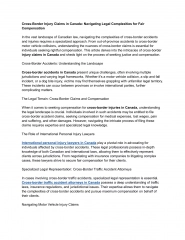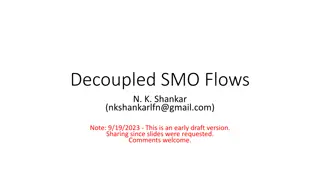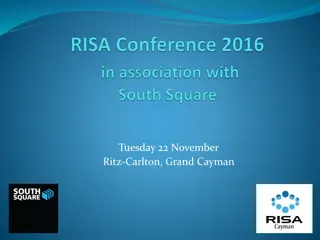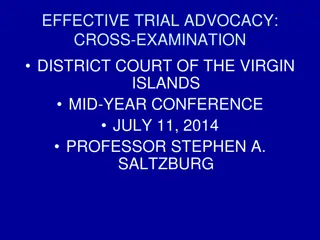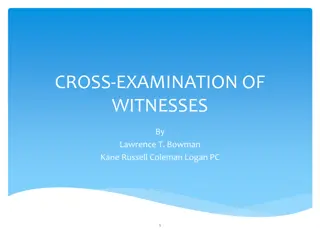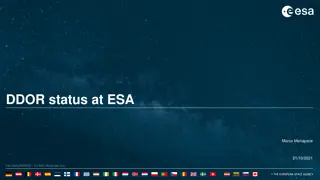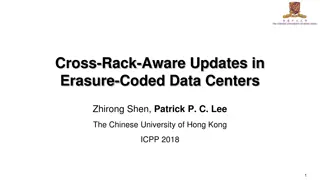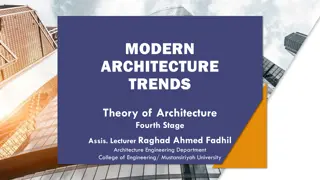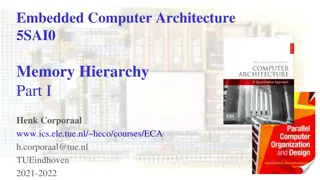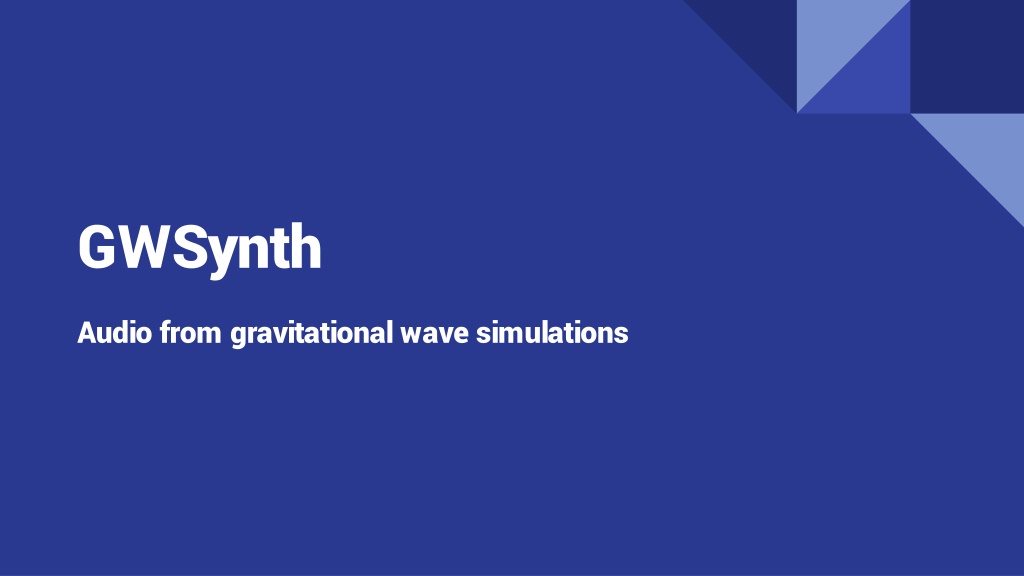
Exploring Gravitational Wave Simulations and Waveforms
Dive into the world of gravitational wave simulations and waveforms, from the disturbance in the curvature of spacetime proposed in 1905 to the first detection at LIGO in 2015. Explore the fascinating observations like GW150914, the inspiral and merger of black holes, and the simulation methods used in numerical relativity. Discover the methods, challenges, and potential applications of these cutting-edge simulations.
Download Presentation

Please find below an Image/Link to download the presentation.
The content on the website is provided AS IS for your information and personal use only. It may not be sold, licensed, or shared on other websites without obtaining consent from the author. If you encounter any issues during the download, it is possible that the publisher has removed the file from their server.
You are allowed to download the files provided on this website for personal or commercial use, subject to the condition that they are used lawfully. All files are the property of their respective owners.
The content on the website is provided AS IS for your information and personal use only. It may not be sold, licensed, or shared on other websites without obtaining consent from the author.
E N D
Presentation Transcript
GWSynth Audio from gravitational wave simulations
Gravitational Waves Disturbance in the curvature of spacetime Proposed in 1905 First detected at LIGO in 2015
GW150914 First observation of GW Merger of 35 and 30 solar mass black holes Changed length of 4 km LIGO arms by fraction of proton width Source: http://physics.aps.org/featured-article-pdf/10.1103/PhysRevLett.116.061102
Warped Spacetime and Horizons of GW150914 To learn more, visit https://www.black-holes.org/gw150914 ! This movie shows the inspiral and merger of two black holes comparable to GW150914. Shown are the horizons of the black holes as black spheres, and a representation of the warped space-time geometry as the colored surface. One hemisphere of the black hole horizons is colored, highlighting the change of rotation axis during the inspiral. The height of the colored surface illustrates curvature of space, the colors from red to green indicate how much time is slowed down near black holes, and the blue and purple colors at larger distance show gravitational waves propagating away. Credit: SXS Collaboration/Canadian Institute for Theoretical Astrophysics/SciNet Source: https://www.black-holes.org/gw150914
Waveforms Inspiral-merger-ringdown Frequency coincidentally in audible range Described as chirps GW150914 GW150914_H1_whitenbp.wav Processed signal NR Simulation GW150914_template_whiten.wav However when time reversed more resemble electronic drums Freeze 7-GW150914_template_whiten [2021-04-14 113839].wav NR Simulation Reversed Freeze 9-Kick 808 DMX (Freeze) [2021-04-14 114533].wav 808 kick drum sample
Simulation Methods Numerical Relativity LALSuite oneAPI Most accurate Requires weeks to months of simulation Completely infeasible for real- time applications Semi-analytical models Seconds to simulate Almost fast enough for real-time Easy programming of different accelerators Potential for use beyond HPC and AI
Simulation Methods Numerical Relativity LALSuite oneAPI Most accurate Requires weeks to months of simulation Completely infeasible for real- time applications Semi-analytical models Seconds to simulate Almost fast enough for real-time Easy programming of different accelerators Potential for use beyond HPC and AI
LALSuite Collection of gravitational wave analysis codes Developed at LIGO Written in C Contains numerous approximants with various capabilities/complexity e.g. spin, precession, tides, higher modes
EOBNRv2HM Effective-one-body-numerical- relativity version 2 higher modes Balance of complexity and capability Changing inclination of orbital plane produces higher modes Most time spent in integration of ODE and calculation of modes Higher modes produce interesting waveforms Freeze 12-waveform [2021-04-19 104501].wav Freeze 13-waveform_hm [2021-04-19 104510].wav
Parareal Parallel-in-time integration method Uses coarse and fine steps Fine steps can be run in parallel Speedup depends on number of parallel processors available for fine steps Source: https://en.wikipedia.org/wiki/File:Parareal_Animation.ogv
Results ~2x speedup Simulation time ~1 s Room for improvement, ideally <100 ms
Future Work Implement GUI Optimize code for GPUs Produce standalone code and plugin

